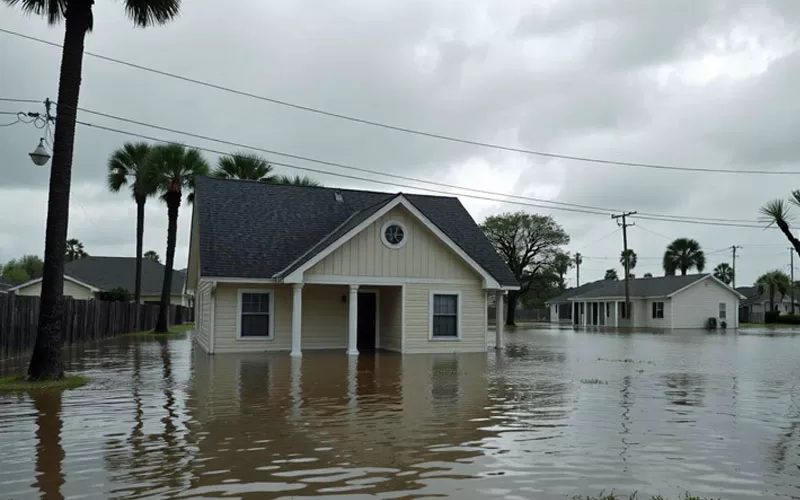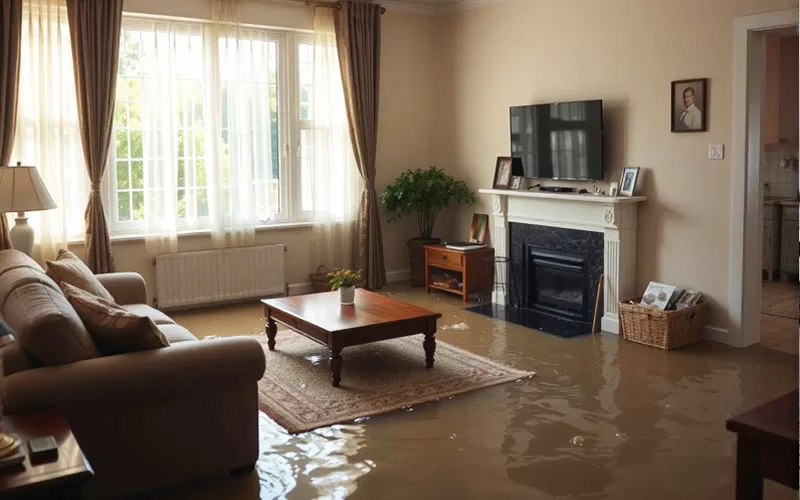
Flooding in your home can be a nightmare. Whether caused by heavy rainfall, burst pipes, or a backed-up sewer, the damage can be overwhelming. Your priority should be ensuring your safety and contacting a business that specializes in mold remediation services. In this blog, we’ll explain what to do when you’ve experienced a flood in your home. Ready? Let’s go!
Ensure Your Safety First
The first and most crucial step after experiencing a flood is ensuring your safety. If floodwaters are still present, avoid wading through them, as they may be contaminated with bacteria, sewage, and chemicals. Floodwaters can weaken your home’s structure, so check for signs of damage, such as sagging ceilings or weakened floors, before walking through affected areas. If the flooding is severe, it may be necessary to evacuate and wait for authorities to confirm that it is safe to return.
Document the Damage for Insurance
Once you have ensured your safety, it is essential to document the damage for insurance purposes. Taking clear photos and videos of all affected areas, including floors, walls, furniture, and personal belongings, will provide a record of the destruction. Make a detailed list of damaged items, including their descriptions and estimated values. Contact your insurance company as soon as possible to report the damage and begin the claims process.
Remove the Water and Begin Drying
After documenting the damage, the next step is to remove standing water and begin the drying process. You can use a wet/dry vacuum, mops, or pumps to extract the water. Once the standing water is removed, open windows and doors to increase ventilation and set up fans and dehumidifiers to speed up the drying process. Soaked items, such as carpets and furniture, should be removed from the area, dried separately, or discarded if they cannot be saved.
Address Mold Concerns Immediately
Mold can begin to grow within 24 to 48 hours after water exposure, making a professional company an essential part of the recovery process. These wet walls will damage your property and pose serious health risks, especially for individuals with allergies or respiratory conditions. Flooding experts can remove affected materials and ensure that your home is properly disinfected.
Clean and Disinfect Your Home
Once the area is dry, thoroughly clean and disinfect the affected areas. Floodwater often carries harmful bacteria and contaminants, making sanitation a priority. Use bleach solutions or specialized cleaning products to disinfect walls, floors, and surfaces. Fabric materials such as clothing, curtains, and upholstery should be washed in hot water with detergent. Food, medicine, and personal care items that have come into contact with floodwater should be discarded to avoid potential health risks.
Repair and Restore the Damage
Once the home has dried and been cleaned, it is time to focus on repairing and restoring the damage. Water-damaged drywall, insulation, and flooring may need to be replaced. Professionals should address any structural issues, such as weakened support beams or damaged foundations. If your plumbing system was compromised during the flood, hiring a plumber to inspect and repair leaks is essential. To prevent future issues, consider painting walls and ceilings with mold-resistant paint.

Prevent Future Flooding
While some floods are unavoidable, there are steps you can take to minimize future risks. Elevating electrical outlets, appliances, and HVAC systems can help protect them from potential water damage. Ensuring that your home’s drainage system functions properly, including keeping gutters and downspouts clear of debris, can help prevent water from pooling around the foundation. Sealing basement cracks and waterproofing walls can also reduce the likelihood of water seepage. If you live in a flood-prone area, investing in flood insurance is a wise decision to provide financial protection in case of another disaster.
Contact Mold Remediation Services Experts
In some cases, professional assistance may be necessary to recover from a flood fully. Water damage restoration specialists can provide large- scale drying and structural repairs. These businesses can thoroughly inspect and eliminate any bacterial growth, preventing long-term issues. Contractors and electricians may be required to repair structural damage and ensure that your home is safe to inhabit again.
Final Thoughts
Experiencing a flood in your home can be stressful, but taking quick action can minimize damage and protect your health. Each step is crucial in restoring your property, from ensuring safety to drying and disinfecting your home. Most importantly, hiring mold remediation services can prevent serious health risks and costly repairs in the future.
*Sponsored Blog Post
Leave a Reply